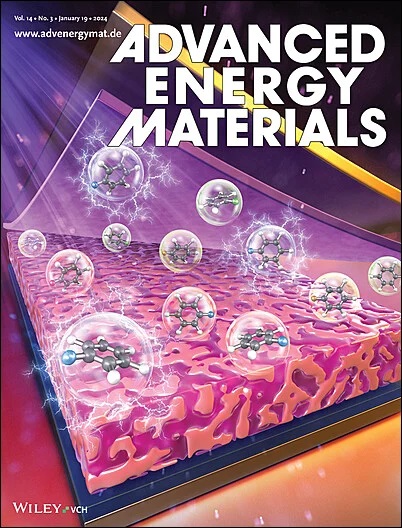Dynamic Cycling of Ultrathin Li Metal Anode via Electrode–Electrolyte Interphase Comprising Lithiophilic Ag and Abundant LiF under Carbonate-Based Electrolyte
IF 24.4
1区 材料科学
Q1 CHEMISTRY, PHYSICAL
引用次数: 0
Abstract
The use of ultrathin lithium (Li) metal anode in Li metal batteries (LMBs) has the potential to significantly improve the energy density in comparison to the conventional LMBs. However, they possess several challenges such as intrinsic dendrite growth and dead Li, leading to poor cyclability and coulombic efficiency (CE). In addition, the ultrathin Li metal can cause much faster degradation of performances than thicker one owing to the exhaustion of Li resource with less compensation. To address these problems, silver trifluoromethanesulfonate (AgCF3SO3, AgTFMS) is proposed as a functional electrolyte additive in carbonate-based electrolyte to buffer the dendritic Li growth and to provide enhanced cyclability. Interestingly, Ag metal derived from the AgTFMS exhibits lithiophilic properties through an alloying reaction with Li. Furthermore, the CF3 functional group of AgTFMS generates a physically stable LiF-rich solid-electrolyte interphase (SEI), which further suppresses the Li dendrite growth. An LiNi0.8Mn0.1Co0.1O2 (NMC811) full-cell comprising the ultrathin Li metal anode (20 µm) with AgTFMS additive reveals an excellent capacity retention of up to 88.2% over 200 cycles, as well as outstanding rate capability under harsh practical condition. As a result, the AgTFMS additive can pave a new dimension for the design of high energy density LMBs using the ultrathin Li metal anode.

求助全文
约1分钟内获得全文
求助全文
来源期刊

Advanced Energy Materials
CHEMISTRY, PHYSICAL-ENERGY & FUELS
CiteScore
41.90
自引率
4.00%
发文量
889
审稿时长
1.4 months
期刊介绍:
Established in 2011, Advanced Energy Materials is an international, interdisciplinary, English-language journal that focuses on materials used in energy harvesting, conversion, and storage. It is regarded as a top-quality journal alongside Advanced Materials, Advanced Functional Materials, and Small.
With a 2022 Impact Factor of 27.8, Advanced Energy Materials is considered a prime source for the best energy-related research. The journal covers a wide range of topics in energy-related research, including organic and inorganic photovoltaics, batteries and supercapacitors, fuel cells, hydrogen generation and storage, thermoelectrics, water splitting and photocatalysis, solar fuels and thermosolar power, magnetocalorics, and piezoelectronics.
The readership of Advanced Energy Materials includes materials scientists, chemists, physicists, and engineers in both academia and industry. The journal is indexed in various databases and collections, such as Advanced Technologies & Aerospace Database, FIZ Karlsruhe, INSPEC (IET), Science Citation Index Expanded, Technology Collection, and Web of Science, among others.
 求助内容:
求助内容: 应助结果提醒方式:
应助结果提醒方式:


